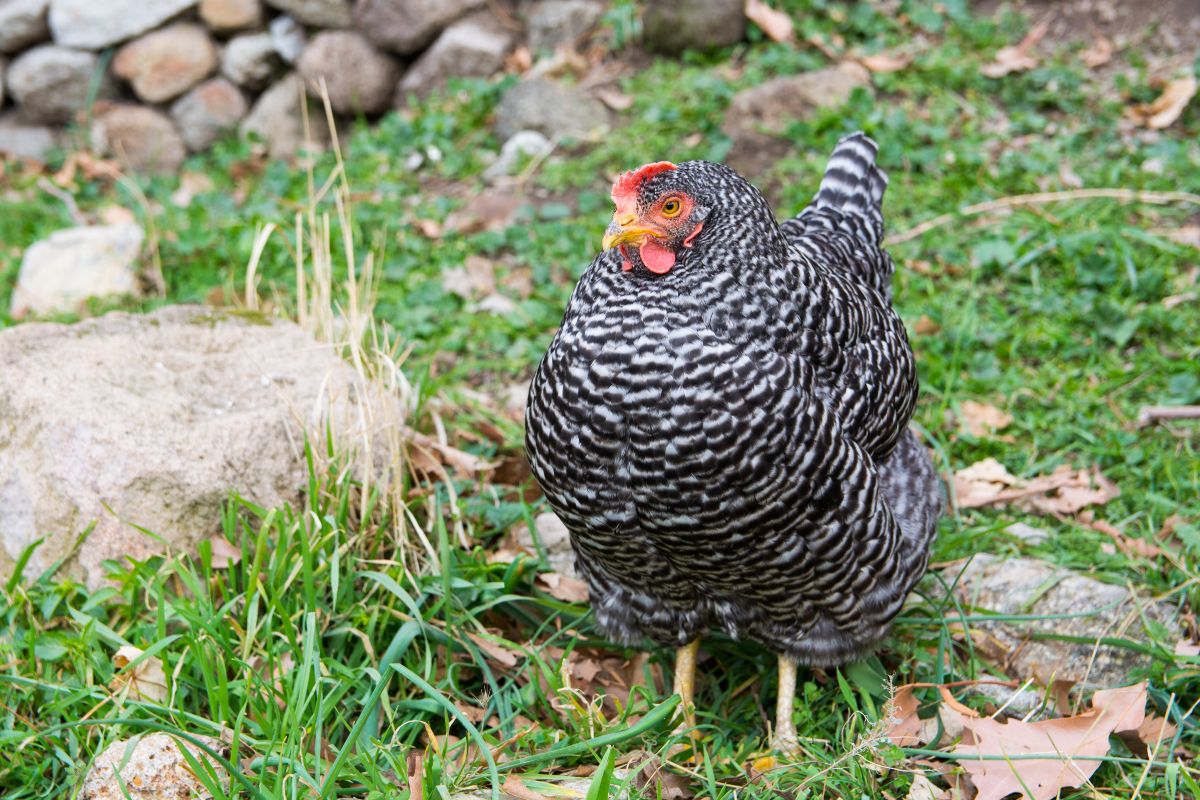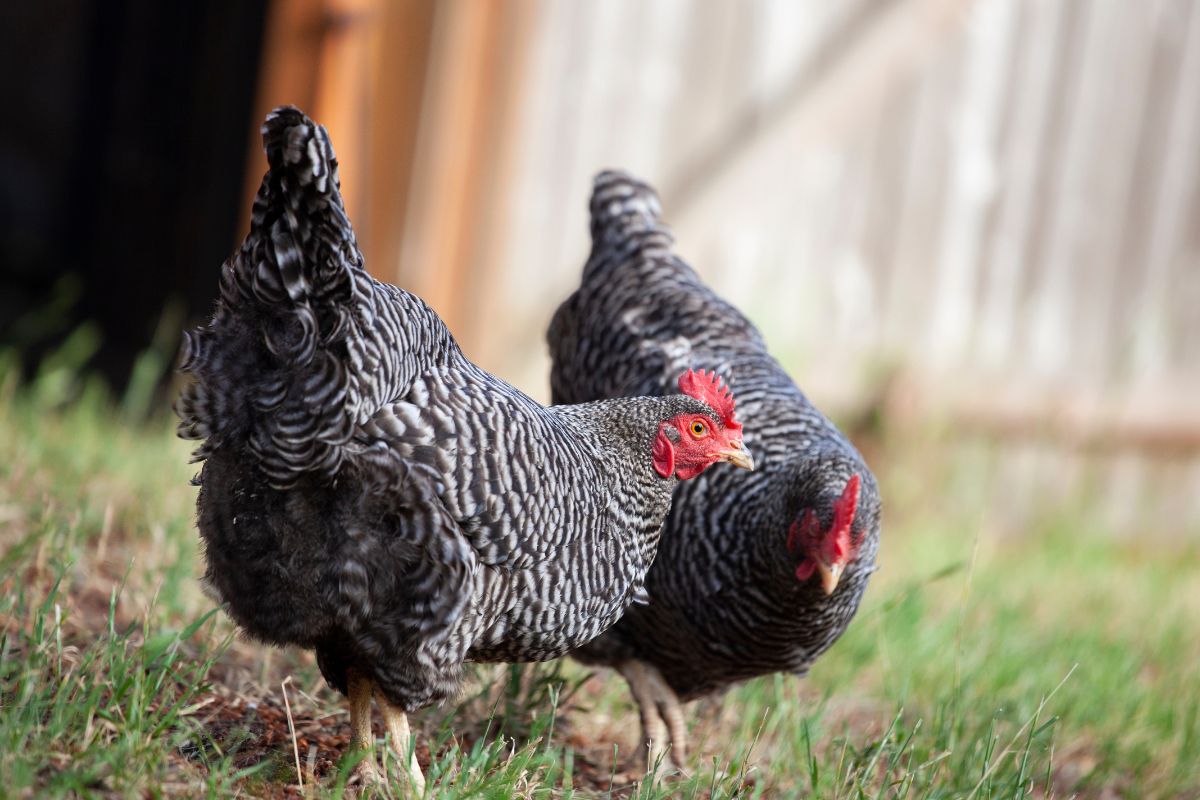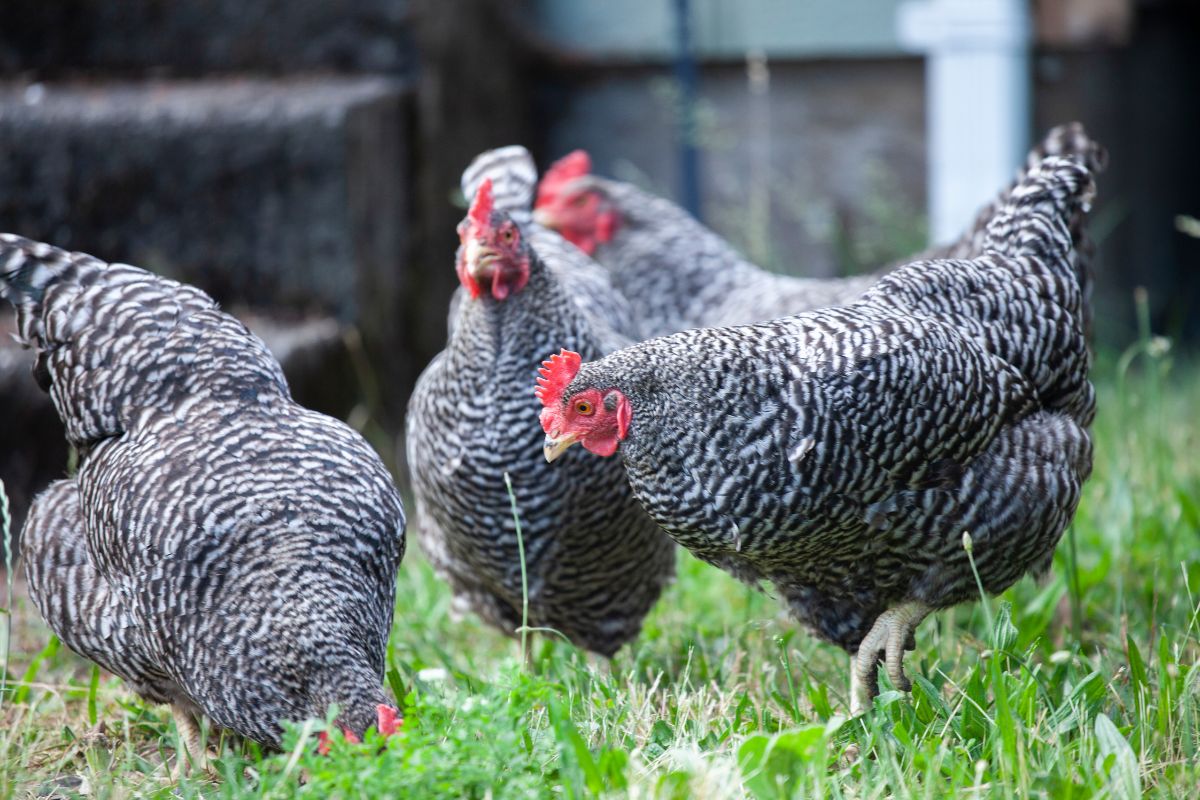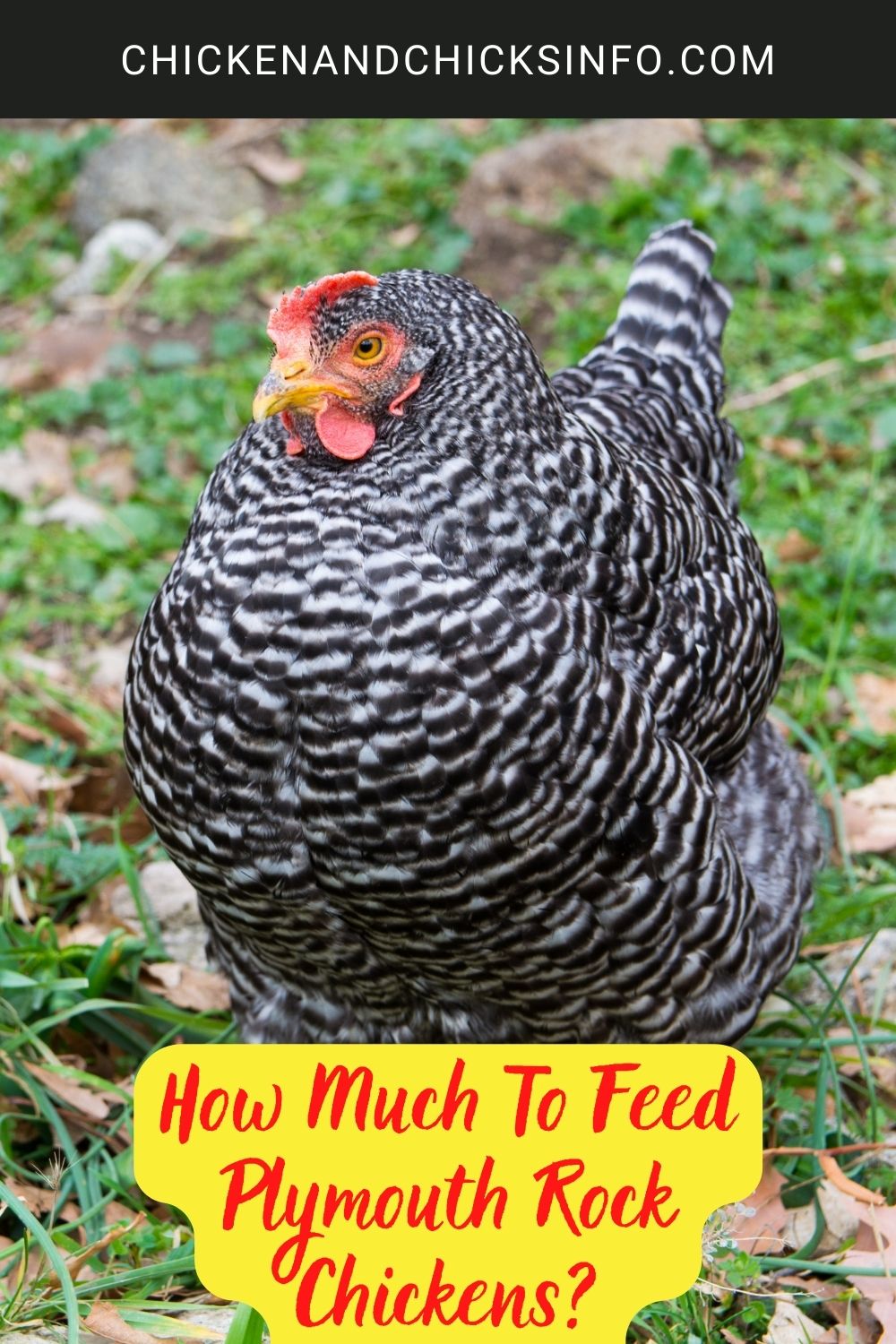
Plymouth Rock chickens are one of the most popular backyard chicken breeds. They’re great layers, producing around 200 large brown eggs a year, and a lot of fun to be around. Generally speaking, they will eat around ¼ lb of quality layer feed a day.
Jump to:
What To Feed Plymouth Rocks?
Most backyard chicken breeds have similar dietary needs. The main differences are around how much they eat, and some mineral content such as prolific layers requiring more calcium.
Chickens also require different nutritional content at different stages of their lives to help promote good health and development.
Here is a look at the two main different commercial feeds you should provide your chickens based on their age:
0-18 Weeks Old
Newborn chicks require a feed high in protein and nutrients to ensure they’re getting everything they need to stay healthy and grow up big and strong.
Some owners use a starter feed for the first 6 weeks that’s around 20% protein. Then swap to a grower feed that has a little less protein, around 18% until they’re 16-18 weeks old.
Another option, however, is feed chicks Purina Start and Grow (link to Amazon below). This feed has been specially formulated to deliver all the nutrients and protein (18%) chicks need to take them to laying age.
16-20 Weeks Onwards

Plymouth Rocks typically start laying when they’re about 16-20 weeks old. When you have a point-of-lay, or you’ve found that first small egg, you should switch them onto a layer feed.
Layer feeds, like the one from Manna Pro available on Amazon below, are specially formulated to ensure laying hens are getting all the nutrients they need to lay regular, healthy eggs.
Hens require a certain amount of calcium each day, and that’s easiest supplied through layer pellets. How else do you think they create those hard eggshells!?
You should also supplement their diet with fresh vegetables, fruits, and hopefully, they’ll find some bugs around the yard too. All of which provide a nice range of minerals, vitamins, and lots of other key nutrients.
How Much Do Plymouth Rock Chickens Eat per Day?
It can be hard to know how much chickens should be eating each day. They tend to eat in bursts, and generally forage and peck around all day.
To give you a better idea, as a rule of thumb the average medium to large adult chicken is expected to eat at least ¼ lb of feed per day. That works out at about 1.5 lbs of feed per week.
I bet it’s not as much as you thought your hungry hens were gobbling up, right? Maybe it isn’t, if your chooks aren’t finding or being given additional scraps, they may eat more.
This is a very rough ballpark figure, of course. It’s up to you to keep an eye on how much your flock is eating. As well as trying to ensure they all get a fair share.
Oh yeah, and don’t forget to provide grit and fresh drinking water!
How Many Times a Day Should You Feed Chickens?

Now you know how much feed you should be putting out, it’s up to you how often you top up their feeders.
Personally, I know most people top up their chicken feeders twice a day; once in the morning and again in the evening. That’s what I do, too.
The goal is to have food available at all times - without overfeeding them. It’s not that chickens will overeat and do themselves any harm as much as it’s just that food will spoil and attract pests and predators.
Related - You can read more about how often to feed chickens here.
How Many Eggs To Plymouth Rocks Lay?
One of the main reasons why Plymouth Rocks are such a popular choice for the backyard is that they’re up there with the best layers.
With all their basic conditions met, you can expect them to lay around 200 eggs per year. That’s not quite up there with a Rhode Island Red or a Leghorn, two of the most prolific layers, but it’s very respectable.
Apparently, the White Plymouth yields the most eggs from all the variations. I couldn’t find any reliable numbers to compare to the other colors though.
In Summary
Feeding Plymouth Rocks - or any backyard chickens - isn’t difficult, there’s no need to stress. As long as you’re providing at least ¼ lb of quality feed and they have access to some other healthy foods, you’ll have happy, healthy, and full chickens.
Well, chickens almost never look or act full, but I think you understand what I mean. This is more than enough to help them maintain optimal health.
More so, you’ll keep finding those delicious, large eggs in their nesting boxes each morning when they’re getting all of their nutritional needs met.





